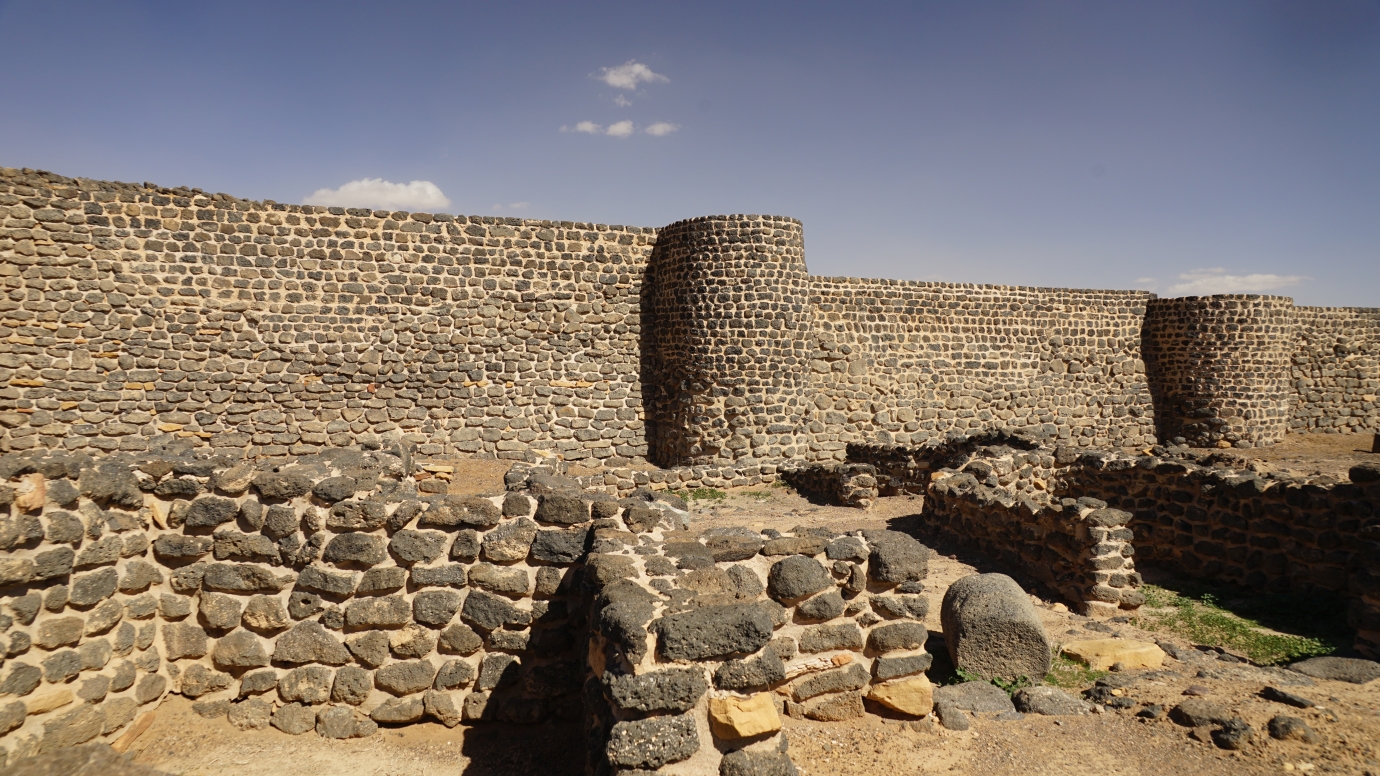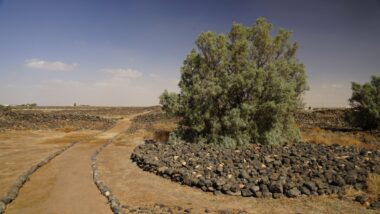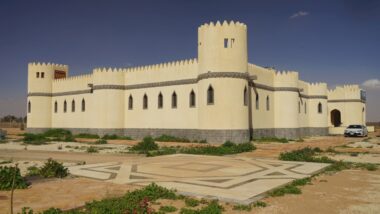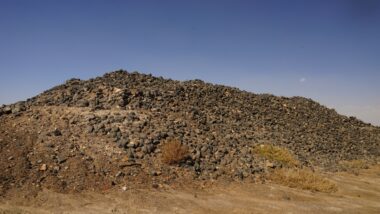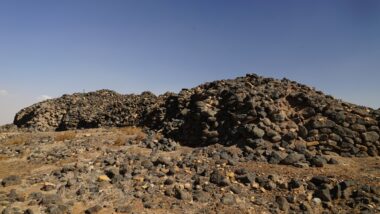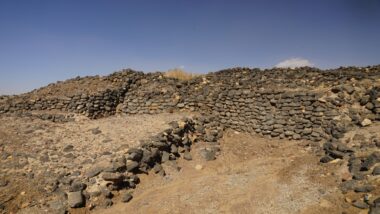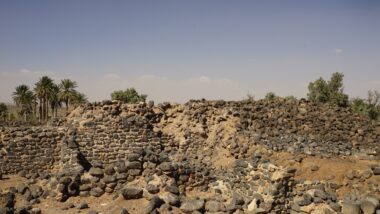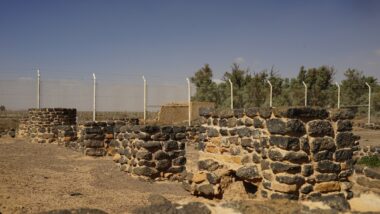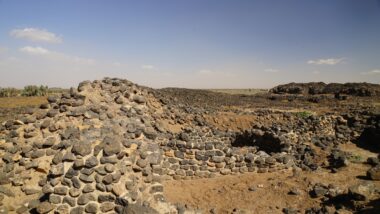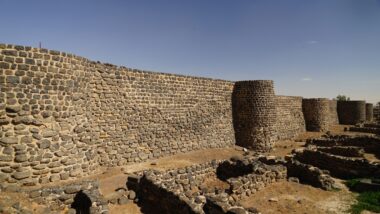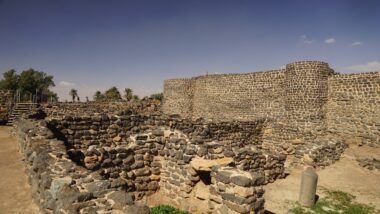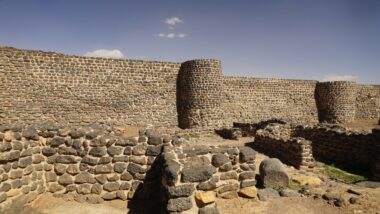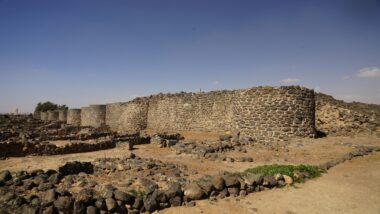We made a short stop at partial excavations of a major oasis city along the pilgrimage road (Darb Zubaydah) from Baghdad to Makkah. When the Abbasid Caliphs took power in 750, one of their first major decisions was to move the capital of the Caliphate from Damascus to Kufa in today’s Iraq. Shortly after this move, the first of the Abbasid Caliphs, Abdallah Abul’Abbas, ordered the installation of milestones, flags, and lighthouses along the trail from Kufa to Makkah, named by then the Darb Heerah to ease the trip of pilgrims and merchants. In 762, Caliph Al-Mansour chose a location 170 km north of Kufa to found a new city named Baghdad that would be the main capital of the Caliphate for five centuries, during which the road between Baghdad/Kufa and Makkah/Madinah became the major trade road and the most important pilgrimage route.
The succeeding caliphs completed the route’s development and provided it with all necessary amenities like water reservoirs, wells, palaces, and rest houses all along the road. Zubaydah bint Ja’far, the granddaughter of the Caliph Abu Ja’far al-Mansour (the founder of Baghdad) and wife of the fifth Abbasid Caliph, Harun ar-Rashid, had a prominent role in the improvement of the facilities along the road. Her efforts to ease the difficult trip to Makkah were remembered, and the road was renamed from Darb Heerah to Darb Zubaydah.
Some estimations state that at its golden age, the ancient oasis city of Fayd hosted more than 1,000 souls that provided shelter and supplies to the pilgrims and merchants traveling between Baghdad and Makkah.
Parking location – Fayd: 27.119901N 42.525224E (🚻,💦)


